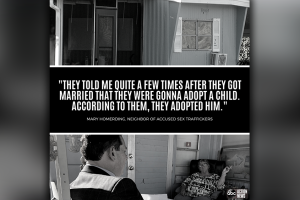The Senate will vote on a bill addressing hate crimes against Asian Americans on Wednesday amid a surge in AAPI hate crimes. The bill comes as many Asian American parents are now discussing with their kids about the bullying, racism, and violence that they may encounter.
As a father to two young boys, New Jersey Democratic Congressman Andy Kim finds himself reflecting on the first time he was targeted for being Korean American. He said he was about six years old when a group of older kids mocked his appearance.
"Saying things like, 'How can I see through these slanty eyes' and, oh, 'He's Chinese or Japanese, oh, it doesn't matter.' It's honestly one of the earliest memories that I can remember at all in my life," Kim told CBS News' Elaine Quijano.
"He said a bigger kid kept telling him, 'Call him China Boy, Chinese boy' over and over again. And my son just kind of laughed it off and was just like, 'I kept telling him, I'm a New Jersey boy.' And it was so sweet that he said that and I could tell it bothered him," Kim said.
He said that he told his son "that he did the right thing" but struggled to find words to comfort him.
"But at that point, I was really floundering and I really struggled to figure out the right words to say... what should I do in preparing myself to have this conversation with my kid?" Kim said.
Those tough conversations about race are something developmental psychologist Tiffany Yip believes parents of all backgrounds should start early.
"I think it's really important for us to think about how we could teach our kids to speak up for their peers. I think if we can empower our children to speak up more for each other, they'll also learn to speak up for themselves better," Yip said.
It's an approach Jane Park is using in Seattle with her two children. Park's conversation came in the wake of the Georgia shootings that killed eight people, including six women of Asian descent. Her video that showed Park talking to her seven-year-old son Bennett about the issue went viral and has been viewed over two million times.
"I was saddened because he's so young. It's just the reality that so many AAPI families are facing is that this is no longer a conversation that we can kind of table for a later time," Park said.
Park said she wants to prepare her children to respond to all hate, no matter who the target.
CBS correspondent Elaine Quijano asked Bennett, "If you were on the playground and you saw somebody else, and they were being bullied just because of how they look, what would you do?" she asked.
"I would say that's not right, and you should be better," Bennett said.
Congressman Kim is going through his own personal reckoning. He's just now learning about years of discrimination his parents endured quietly as immigrants.
"The question for us and our generation is, 'Are we going to accept that there's just a certain baseline of foreignness and xenophobia and discrimination that we just have to accept?' And I say no, this is a moment where many of us feel empowered to say that 'This is just not right and yes... we belong,'" he said.
Psychologists report that children are able to understand the concept of race as young as age three, and that's why parents should start these conversations early, so children aren't left to try to make sense of things on their own.
Yip recommends that one place to start is parents expressing to their children how bias makes them feel, which can then open the door for kids to voice their own feelings.













